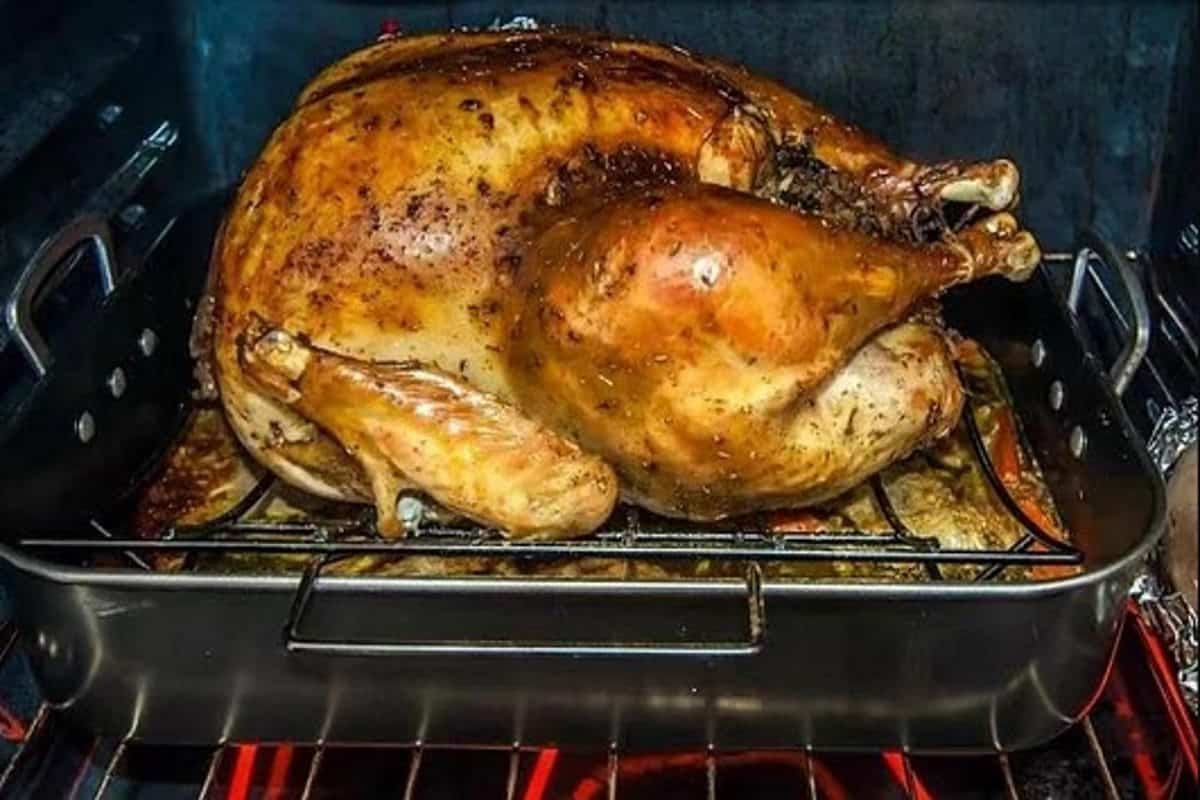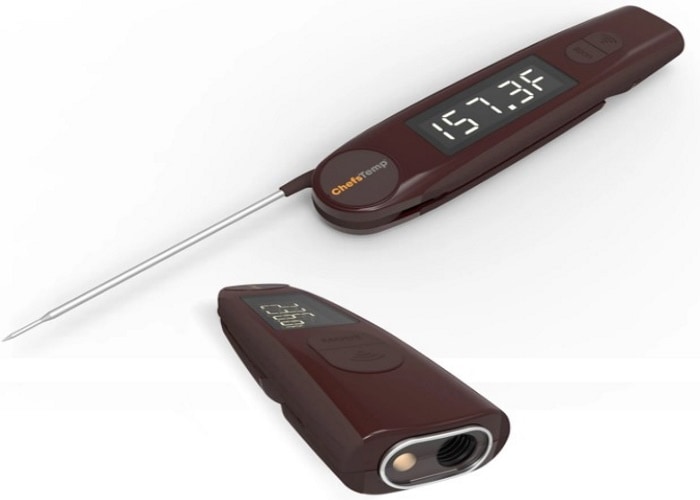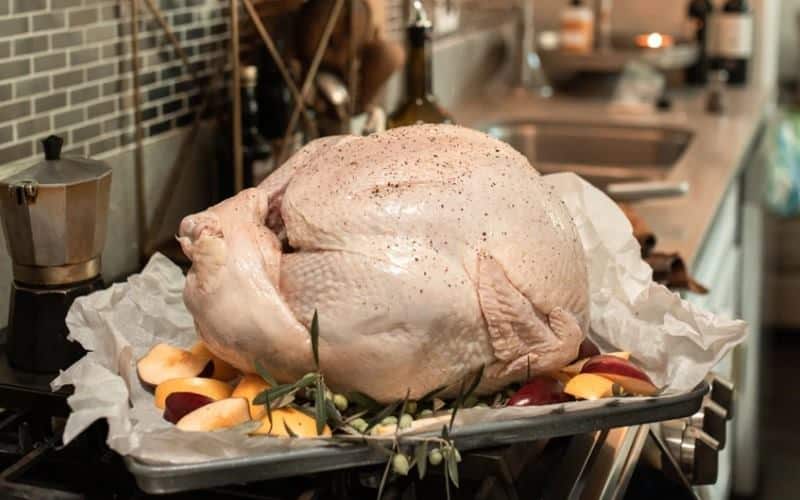
Where to Put a Thermometer in a Turkey
Thanksgiving Day is one of those holidays that are heavily centered around food. And there is one dish that is the centerpiece of every Thanksgiving celebration – turkey. You can find a wide range of recipes on how to cook turkey, but there are not a lot of tips on where to put the thermometer.
In this guide, you will learn more about the key principles you need to know when using and reading a meat thermometer. It could spell the difference between a perfectly cooked turkey and one that ruins your family’s Thanksgiving meal.
Table of Contents
Using the Right Thermometer
Every kitchen should have one trusty thermometer to use when cooking meat. Some types of meat can be very temperamental and getting the right cooking temperature is difficult to achieve. This is why you need to use a tool like a thermometer so that it can provide you with essential information about the state of the meat during the cooking process. Otherwise, you have to rely on your senses, and they aren’t always so reliable (unless you are a turkey expert).
There is also another reason why using a thermometer is a must: you want to serve perfectly cooked turkey to prevent foodborne illness. Yes, you have more reasons to worry about the cook of your turkey aside from making sure that the meat is perfectly delicious and juicy.
There are two types of thermometers that you can use on your turkey: instant-read vs leave-in thermometer. The instant read one is able to display the temperature of the meat once it is inserted onto the turkey. It is typically made with a stainless steel probe that comes into contact with the meat and a display at the other end where you can see the temperature reading.
On the other hand, there is a leave-in thermometer that is inserted into the turkey during the cooking process. It is designed to be oven-proof and the probe is connected to a device that you can monitor outside of the oven while the turkey cooks.
There are two more options available when choosing the thermometer to use on your turkey: analog or digital. The digital one displays the temperature reading in numerals. The analog type displays the temperature reading with a dial like a clock. Both types are reliable and you can choose based on what is most convenient for you.

How Do I Correctly Use a Thermometer When Cooking Meat?
A thermometer is one of the best tools in your kitchen to ensure food safety and perfectly cooked meats. Our digital instant read thermometers detect the temperature at the very tip of the probe. To take an accurate reading you must place the very tip of the probe in the center of the thickest part of the meat. If you are using the thermometer for deep frying or candy making, make sure to keep the probe from the sides or bottom of the pan.
To cook larger cuts, such as roasts, whole turkeys or chickens, we suggest using the ChefsTemp Quad XPro instant read thermometer with oven/grill safe probes that you can leave in your food throughout the cooking process.
For smaller cuts like individual steaks, chicken breasts and fish filets we suggest using one of our pocket instant read thermometers for quick and accurate readings.
Where to Put a Thermometer in a Turkey?
Knowing where to put a thermometer in a turkey is one of the most important aspects of getting the perfect cook on the meat. For best results, you want to accurately place the thermometer so you don’t have an incorrect reading.
There are three general places that you should check if you want to get the right temperature on the turkey. These are the following: thigh, breast, and wing. It is important to check the temperature of the meat in all three places to ensure that you have an even cook.
You must insert the probe on your thermometer on the deepest part of the breast. Avoid sticking the probe all the way through. You need to aim for the middle section of the meat, which is the part that takes the longest to cook.
The sweet spot for the placement of the thermometer is when there is an even layer of meat on either side of the probe. Make sure to avoid the bones because its thermal properties are different to that of the meat. If you mistakenly rest the probe against the bone, it could give you an inaccurate reading. It is also worth noting that the bones are not located in the middle part of the turkey.
Use this general guide if you have trouble knowing where to put a thermometer in a turkey.
Tips for Placing the Probe
The placement of the probe is critical to getting the right temperature of the turkey meat when cooking. You need to insert the probe in a horizontal manner. You must insert it near the neck cavity.
When inserting the probe, here are a few things you need to know to get the most accurate temperature reading:
1. Know the different temperature gradients.
Heat is transferred through substances; this is a fact that you know from basic science. This explains why the exterior of the turkey cooks the fastest because it has direct exposure to the heat source in the oven. You can expect the exterior temperature of the turkey to be much higher than the inside (especially the middle).
Knowing this will help you choose the ideal setting on your oven as you cook the turkey. If you set it too high, this will make the outside overcooked but the inside remains uncooked. Understanding how temperature gradient works will also enable you to know the proper placement for the probe when checking the turkey’s internal temperature.
2. Know about the thermal center.
The thermal center refers to the part of the turkey that will take the longest to cook. With a turkey, the breast is the largest mass of meat. The center of the breast is where the thermal center will be. You need to check this area when you want to see if the turkey is cooked properly.
A good rule of thumb is this: your turkey is only as done as the lowest temperature reading that you can get inside the meat.
3. Understand how the probe works.
Aside from properly placing the probe, you must also know how the probe works itself. The sensor of the probe is located at the very tip. You need to aim the sensor properly as you insert the probe so you can get an accurate reading.

What is the Ideal Temperature for a Perfectly Cooked Turkey?
This is the most important question of all aside from knowing where to put a thermometer in a turkey. The ideal temperature you should aim for is 165 degrees F. You need to make sure that your turkey reaches this temperature or it will be undercooked and not safe to eat. This is the ideal cooking temperature for poultry, including chicken. You can check the Food Safety Website for the full guidelines on the safe minimum cooking temperature chart.
The middle is the part that takes the longest to cook, so when it shows 165 degrees F on your thermometer you know it’s done. The thigh and wing area might register a higher temperature of 175 to 180 degrees F.
Try not to overcook the turkey, as it could make the meat dry. You still want your turkey to be soft and juicy.
How Should I Care for My Meat Thermometer?
A digital instant read thermometer is a tool, and like all tools it needs to be cared for to help ensure a long tenure in your kitchen.
Immediately after use clean the stem of the thermometer with hot soapy water, or a damp cloth with a household kitchen cleaner. This not only eliminates the risk of cross contamination, keeping food safety at the forefront, but also prevents build up on the probe that could affect the reading.
Store your thermometer away from direct sunlight as the LCD display screen can become damaged with prolonged exposure.
When storing your cables make sure they are free of kinks and twists. Keep them loosely coiled or hung to ensure the internal wires are not damaged.
And most importantly, enjoy the wonderful and perfectly cooked meal you have just prepared!
One Comment
Comments are closed.
Discover Other ChefsTemp Products
Discover more recipes and learn kitchen tricks by joining our cooking family on Facebook.
You may also like:
















[…] most common questions that people ask, especially those who are new to cooking turkey. Where is the best place to insert a thermometer in order to get the most accurate temperature reading in a […]